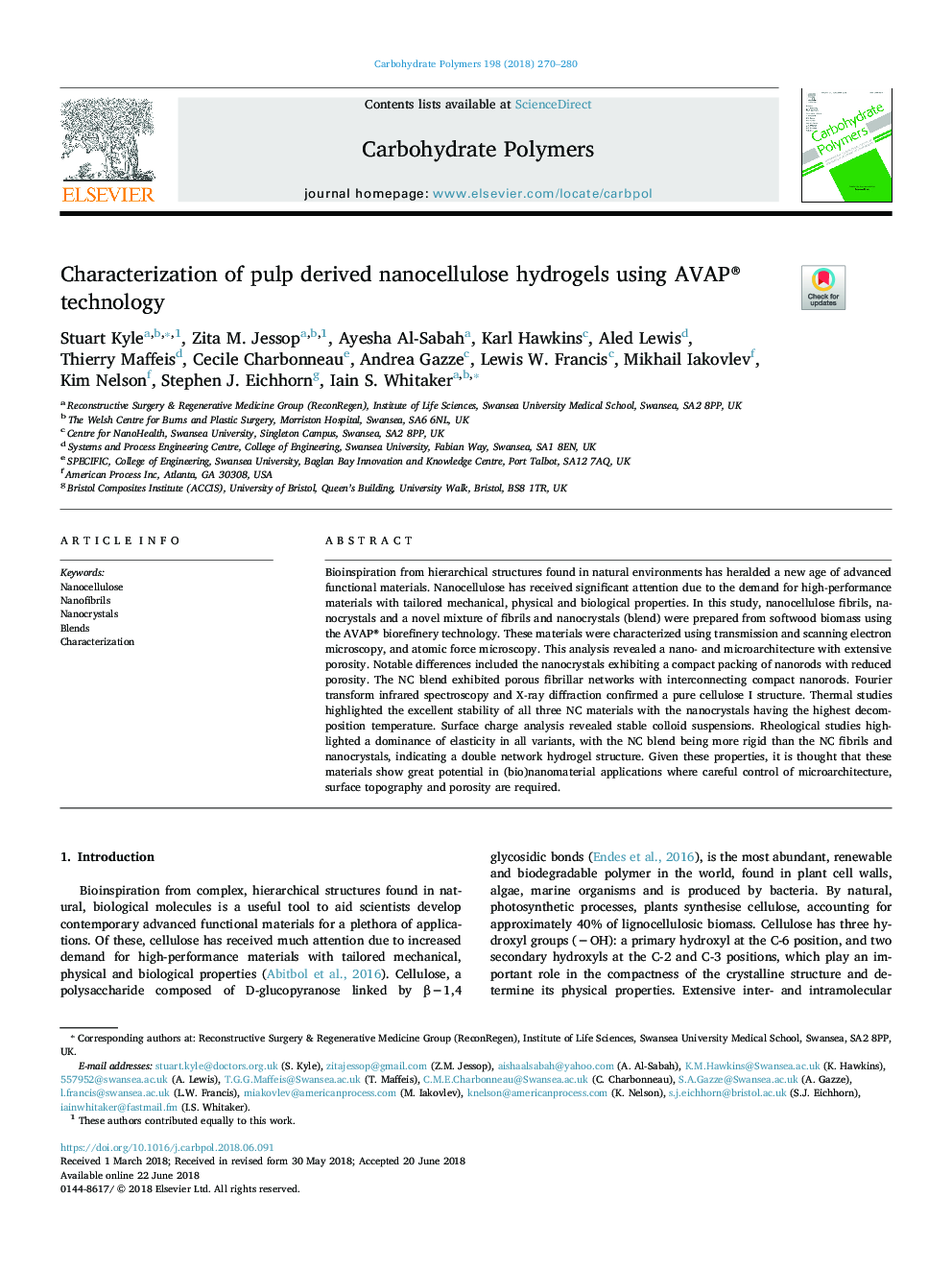| Article ID | Journal | Published Year | Pages | File Type |
|---|---|---|---|---|
| 7781414 | Carbohydrate Polymers | 2018 | 11 Pages |
Abstract
Bioinspiration from hierarchical structures found in natural environments has heralded a new age of advanced functional materials. Nanocellulose has received significant attention due to the demand for high-performance materials with tailored mechanical, physical and biological properties. In this study, nanocellulose fibrils, nanocrystals and a novel mixture of fibrils and nanocrystals (blend) were prepared from softwood biomass using the AVAP® biorefinery technology. These materials were characterized using transmission and scanning electron microscopy, and atomic force microscopy. This analysis revealed a nano- and microarchitecture with extensive porosity. Notable differences included the nanocrystals exhibiting a compact packing of nanorods with reduced porosity. The NC blend exhibited porous fibrillar networks with interconnecting compact nanorods. Fourier transform infrared spectroscopy and X-ray diffraction confirmed a pure cellulose I structure. Thermal studies highlighted the excellent stability of all three NC materials with the nanocrystals having the highest decomposition temperature. Surface charge analysis revealed stable colloid suspensions. Rheological studies highlighted a dominance of elasticity in all variants, with the NC blend being more rigid than the NC fibrils and nanocrystals, indicating a double network hydrogel structure. Given these properties, it is thought that these materials show great potential in (bio)nanomaterial applications where careful control of microarchitecture, surface topography and porosity are required.
Related Topics
Physical Sciences and Engineering
Chemistry
Organic Chemistry
Authors
Stuart Kyle, Zita M. Jessop, Ayesha Al-Sabah, Karl Hawkins, Aled Lewis, Thierry Maffeis, Cecile Charbonneau, Andrea Gazze, Lewis W. Francis, Mikhail Iakovlev, Kim Nelson, Stephen J. Eichhorn, Iain S. Whitaker,
